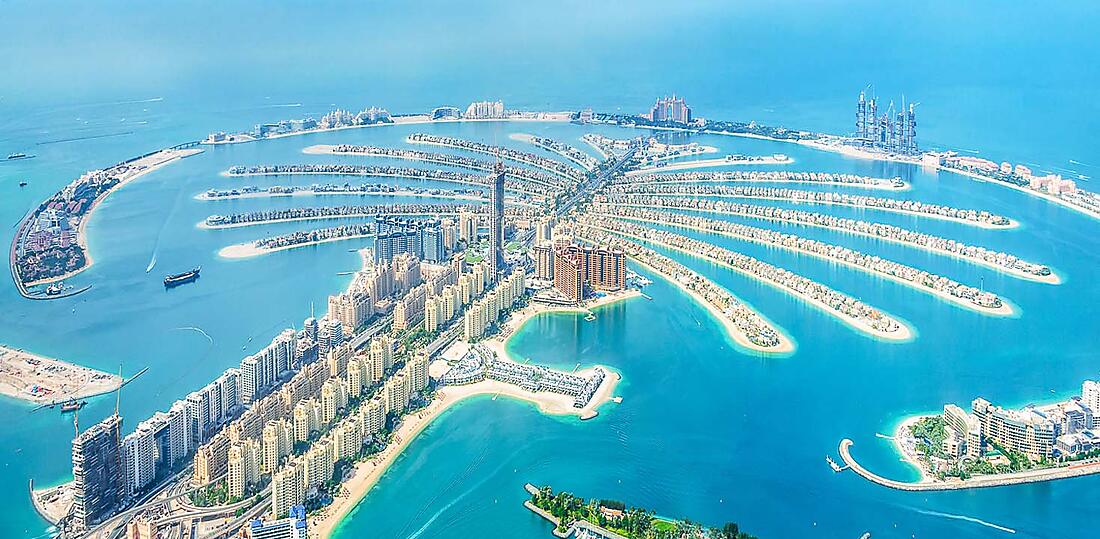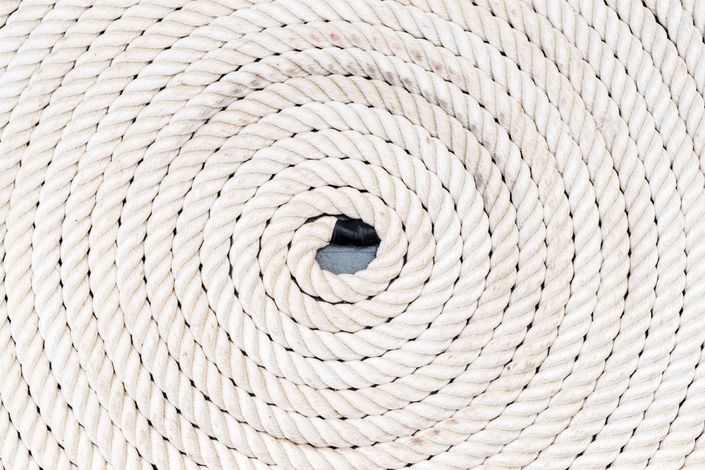3 reasons to visit Africa and the Indian Ocean
When you choose destinations like Africa and the Indian Ocean, you are opting for vastness, culture, a variety of landscapes, and a range of plant and animal species. Many people dream of exotic African travels and Indian Ocean cruises. Here are three reasons to bite the bullet!
Find out more
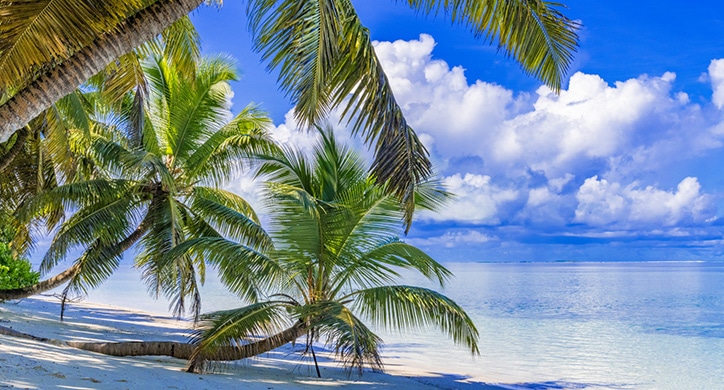
Must-Sees - Africa and Indian Ocean
Be transfixed by places as different as they are bewitching, from Tanzania to Sri Lanka, South Africa to Kerala, and the Seychelles to the Maldives. Here are the sites you must visit in Africa and the Indian Ocean
Find out more
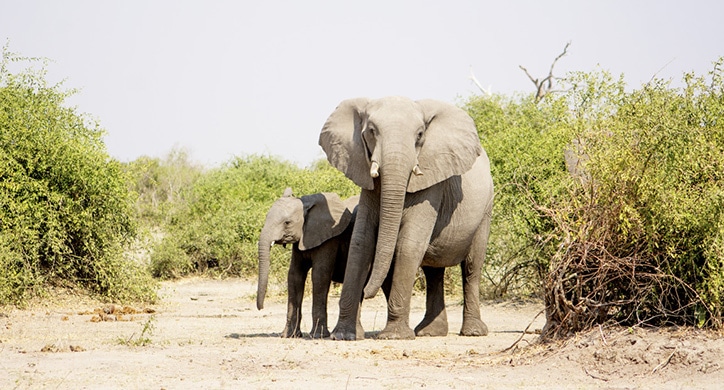
Explore Africa and Indian Ocean
3 reasons to visit Africa and the Indian Ocean
When you choose destinations like Africa and the Indian Ocean, you are opting for vastness, culture, a variety of landscapes, and a range of plant and animal species. Many people dream of exotic African travels and Indian Ocean cruises. Here are three reasons to bite the bullet!
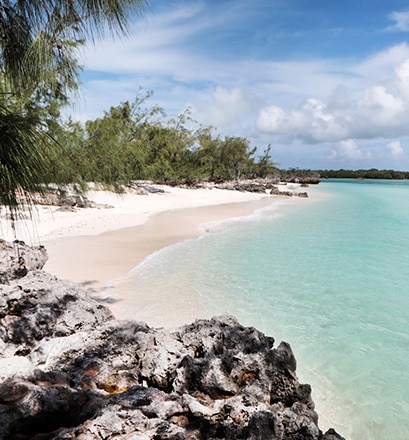
Rich cultures and UNESCO World Heritage
From the Aldabra Atoll to the Vallée de Mai in the Seychelles, and the iconic Galle Fort in Sri Lanka, via the ruins of Kilwa Kisiwani and Zanzibar's Stone Town, the piton and cirque area of Reunion and Robben Island off Cape Town, there are many UNESCO World Heritage sites in this region. Sites of historic and cultural heritage and nature reserves are dotted around the African coastline and Indian Ocean islands. Then there are the jewels of the Emirates, Madagascar and India, which reflect these destinations' richness.
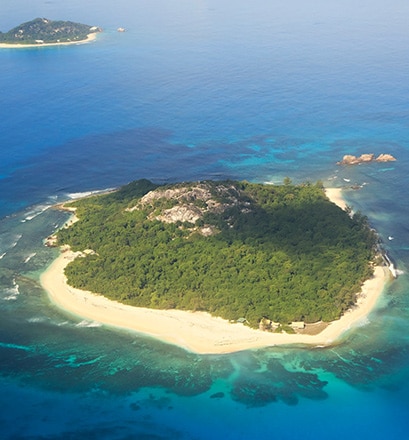
Idyllic islands
Although the Seychelles have some of the most beautiful beaches in the world, other Indian Ocean islands are also worth a detour. The Scattered Islands, a French territory near Madagascar, are a wild paradise. The Maldives boast picture-postcard scenery with uninhabited islands where the fine-sand beaches give way to transparent waters. The equally amazing Zanzibar remains movingly authentic, while Mauritius and Reunion offer wild and verdant landscapes.
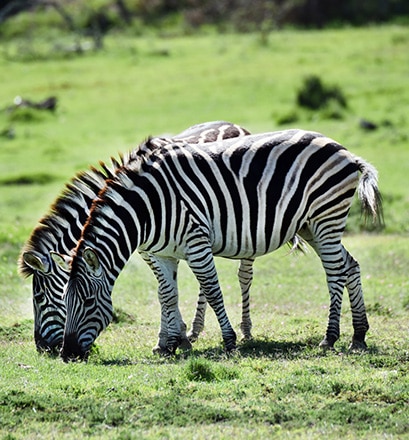
Spectacular fauna
It's hard not to feel like a child again when you meet the extraordinary animals that live in Africa and the Indian Ocean. On safaris in South Africa and Tanzania, lions, leopards, giraffes, zebras, rhinos and other free animals are a delight to see. The Seychelles are home to impressive giant tortoises. In Madagascar, 80 to 90% of the species are native—the country is truly a world apart. Finally, scuba diving off the Seychelles, Maldives and Zanzibar remains a fantastic experience with sea turtles, multicoloured coral, and tropical fish.
Must-Sees - Africa and Indian Ocean
Be transfixed by places as different as they are bewitching, from Tanzania to Sri Lanka, South Africa to Kerala, and the Seychelles to the Maldives. Here are the sites you must visit in Africa and the Indian Ocean
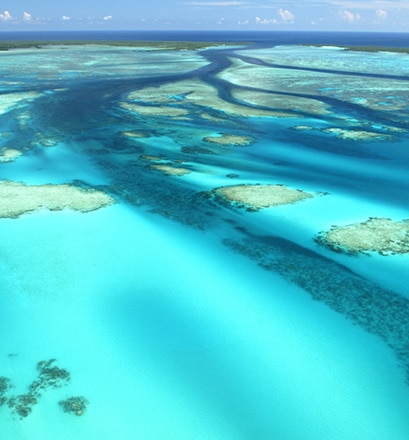
Swim at the Aldabra Atoll - Seychelles
The biggest raised atoll in the world, the Aldabra Atoll is home to the largest giant tortoise population in the Seychelles. Protected from human activity and a UNESCO World Heritage site since 1982, the atoll is also used as a refuge by many birds. Only a few travellers are lucky enough to access its fine-sand beaches and turquoise waters.
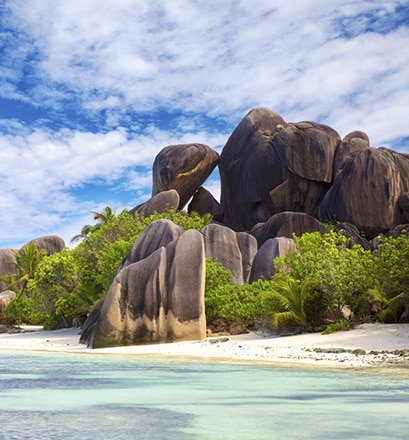
Enjoy Anse Source d’Argent beach on La Digue - Seychelles
This beach is often named as one of the most beautiful on the planet, and with good reason: Anse Source d’Argent is like a picture postcard. Palm trees line the golden sands, and granite blocks add a wild feel to this strip of land edged with calm, transparent waters. Swimming here is lovely for much of the year. Reminiscent of the Garden of Eden, Anse Source d’Argent is one of the Indian Ocean's treasures.
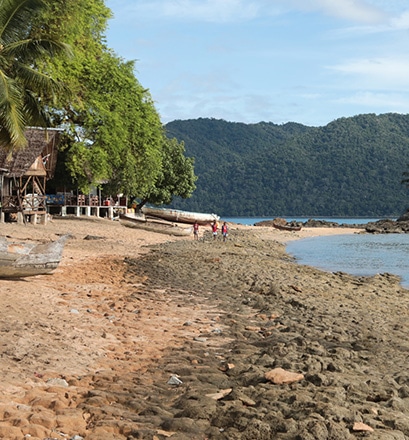
Relax on Nosy Komba - Madagascar
A little dot of an island to the northwest of Madagascar, Nosy Komba is famous for its tropical forest and the many lemurs it is home to. Its various little beaches, emerald waters, and traditional small boats also create an authentic and idyllic backdrop that encourages visitors to relax.
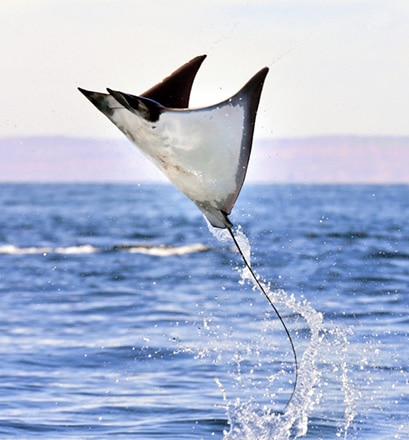
Meet lots of marine fauna on Pemba Island - Tanzania
Less well-known than neighbouring Zanzibar, Pemba Island is an idyllic place that has not yet been explored much by tourists. However, it does have kilometres of white-sand beaches and translucent waters brimming with marine fauna. Humphead wrasses, groupers, Manta rays, eagle rays, blue runners and barracudas can all be seen on the impressive slopes of the outer reef.
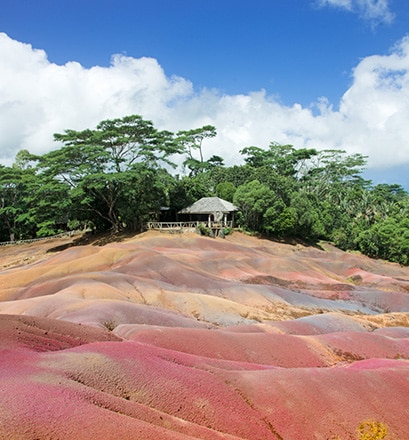
Admire Chamarel Waterfall and dunes - Mauritius
Real natural phenomena on Mauritius, the Chamarel dunes come in seven colours from ochre to purple, brown, and red. Coloured by mineral oxides, this volcanic ash has been created by erosion. And the most astonishing thing? Even if you mix up the different colours, they always end up separating again. Before you get to the land of seven colours, the hundred-metre-tall Chamarel Waterfall will have already made a big impression.
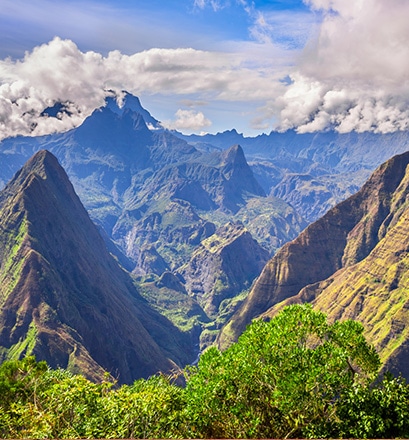
Fly over Reunion's cirques
With 40% of the island a UNESCO World Heritage site, Reunion has rich natural resources. Among its treasures are the Piton des Neiges volcano, dormant for thousands of years, and the Piton de la Fournaises, one of the most active volcanoes in the world. With their peaks, jagged landscapes, and waterfalls, the Mafate, Cilaos, and Salazie cirques are dominated by views worth admiring from a helicopter!
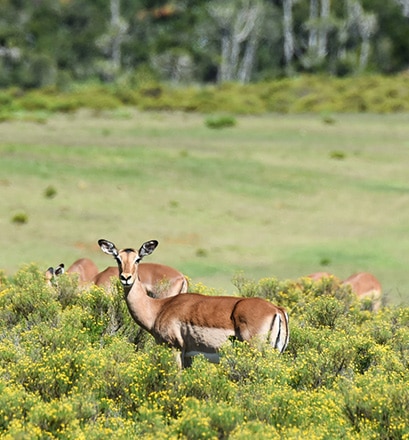
Go on safari in Kruger National Park - South Africa
A UNESCO Biosphere Reserve, Kruger National Parks is home to nearly 2,000 plant species, over 300 bird species and large mammals like lions, leopards, rhinos, buffaloes, elephants, giraffes and zebras. Famous as the biggest animal reserve in South Africa, its size and exoticism won't disappoint. You need a three-day safari through these 20,000 square kilometres to explore even a tiny part of it and get close to extraordinary wildlife.
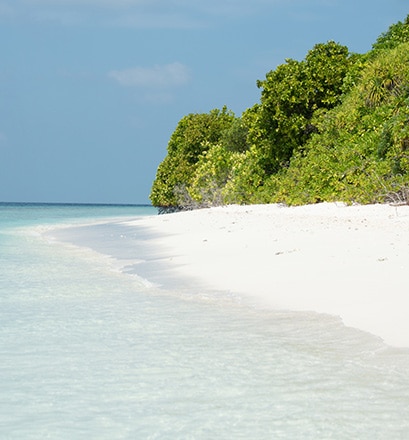
Get away from it all at the Baa Atoll - Maldives
Declared a UNESCO Biosphere Reserve in 2011, the Baa Atoll is exceptional for more than one reason. Not only is it home to one of the biggest coral reef collections in the Indian Ocean, but the 50 islets that make it up also have a myriad of idyllic beaches. There's nothing like these dots of land scattered in the turquoise waters for a place to give yourself a beautiful break.
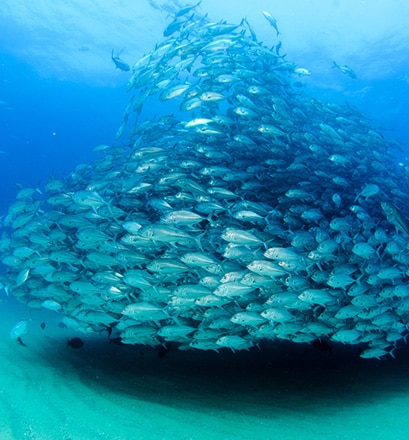
Dive in the Maldives' translucent waters
The Noonu, Baa, Rasdhoo, Ari, Mulaku and Malé Atolls...although these names evoke places where all the elements combine to create a stunning setting, they are also world-famous for their rich marine fauna. The water is so clear that unforgettable dives will reveal Manta rays, eagle rays, grey reef sharks, while sharks, sea turtles, mahi-mahi, rainbow runners, humphead wrasses and brightly coloured coral gardens.
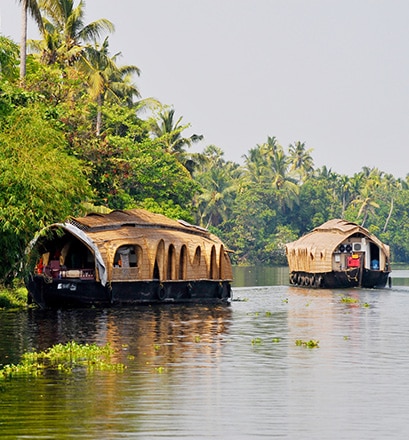
Sail along Kerala's canals - India
The Kerala region in southwest India is one of the most popular and lushest areas in the country. Luxuriant vegetation, fruit tree and spice plantations, coconut palm forests...these green landscapes are criss-crossed by the backwaters, or a network of canals and lakes. Climb aboard a traditional boat and set sail to explore fishing villages and breathtaking panoramas in the region to make unforgettable memories on land and on the water.
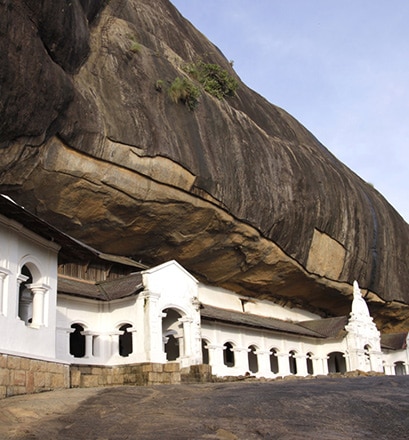
Treat yourself to spiritual time out in Dambulla - Sri Lanka
Dambulla's Golden Temple has been a UNESCO World Heritage site since 1991 and is one of Sri Lanka's treasures. At the site entrance, a 30-metre sitting Buddha covered in gold leaf shows just how important this place is. Yet, the Dambulla Temple is most famous for its 80 caves covering over 2,000 square metres and containing wall paintings and statues dating from the first century.
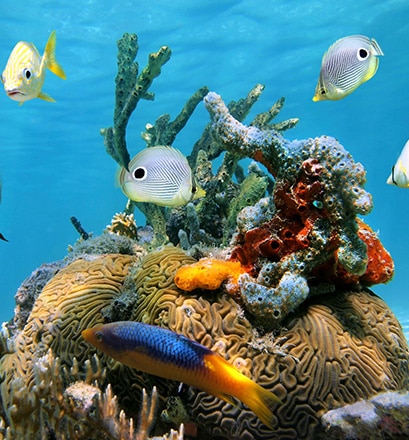
Pretend to be an explorer in the Scattered Islands
The Scattered Islands off Madagascar are surprisingly beautiful in a wild way. Many birds have set up home on Europa, Juan de Nova and the Glorieuses. The only inhabitants are in the French military, and the area has been classed as a natural reserve. These islands are real sanctuaries and often serve as a "zero point" for scientific studies. The surrounding lagoons and coral reefs, deserted beaches and rich marine environment complete this enchanting panorama.
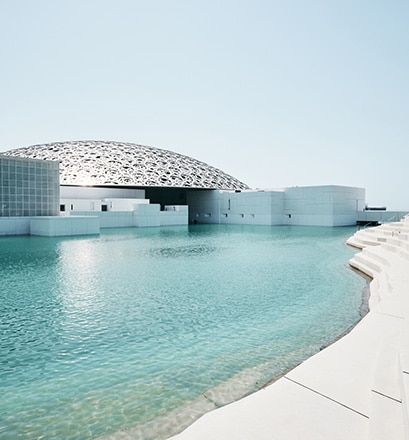
Visit the Louvre Abu Dhabi - United Arab Emirates
Open to the public since 2017, the Louvre Abu Dhabi is the result of an unprecedented collaboration between the United Arab Emirates and France. It displays works from all over the world, first loaned by French museums like the Louvre, and enriched by the Louvre Abu Dhabi's own collections. The latter has an unusual approach: not grouping pieces by school, technique or material, but according to influences and connections between civilisations.








